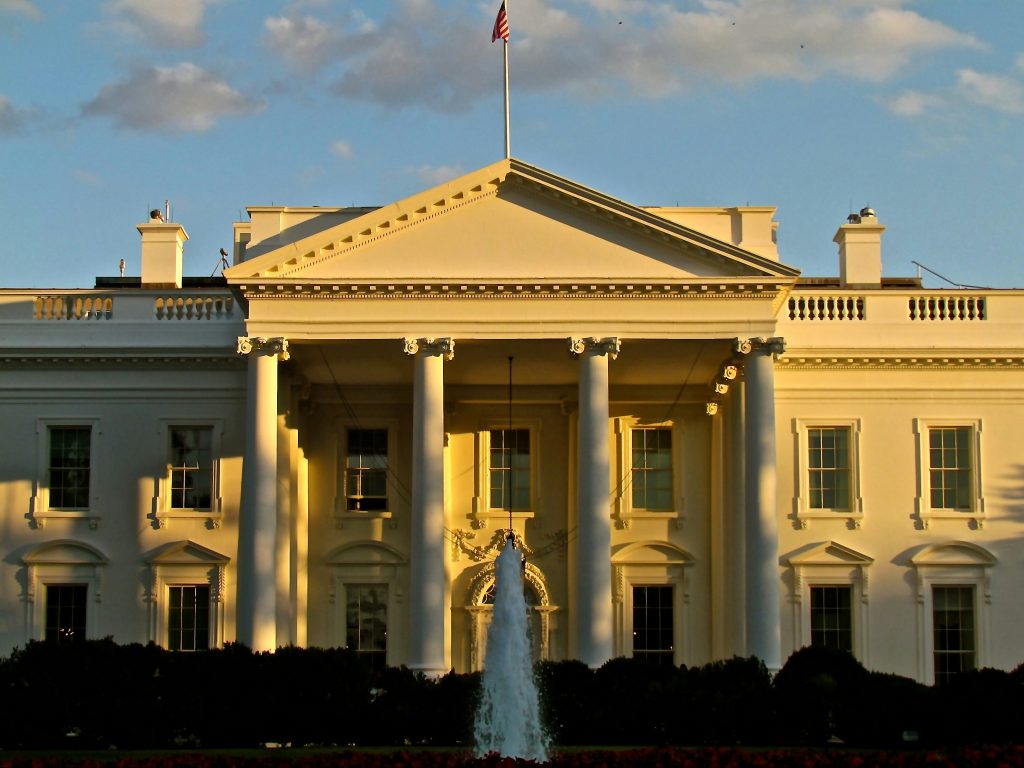The Federal Government’s New $5 Billion EV Charging Infrastructure Plan May Impact Tax Credits for Consumers
The Federal Government’s New $5 Billion EV Charging Infrastructure Plan May Impact Tax Credits For Consumers
By Stacey Hall*
For decades, electric vehicles (EVs) have been floated as a revolutionary new way to curb greenhouse gas emissions and to decrease dependence on foreign oil supplies.[1] However, EVs have struggled to gain widespread adoption due to limitations in technology and cost.[2] But with technology improving and costs beginning to lower, electric vehicles (EVs) finally seem poised to take over America’s highways. In recognition of the potential of EVs to combat emissions, the Biden administration has made EV adoption a primary focus going into 2022.[3]
On February 10, the U.S. Departments of Transportation and Energy furthered these efforts by announcing a new infrastructure plan devoting $5 billion in federal funding to the roll-out of a nationwide network of EV charging stations.[4] The federal government will distribute the funds to the states and the District of Columbia over a five-year period, beginning with $615 million in disbursements for the fiscal year 2022.[5]
To receive the federal funds, each state must submit a plan for how it will use the money.[6] States have considerable leeway to develop their own plans, but all proposals must meet certain minimum standards set by the federal government to gain federal approval.[7] These standards govern, among other things, the frequency of charging stations along interstate highways and the number of charging ports at each station.[8]
While the roll-out of an expanded network of EV charging stations will no doubt transform the physical landscape of America, it may also affect the nation’s tax treatment of EVs. The federal government has provided tax credits to EV purchasers for over 10 years.[9] At the federal level, individual consumers currently receive a tax credit in the amount of up to $7,500 for each new vehicle purchased in the United States, depending on the vehicle’s manufacturer and battery capacity.[10] Many states and municipalities also offer their own tax credits to supplement the federal offerings.[11]
The current EV tax credit provisions begin to phase out once a manufacturer has sold 200,000 qualifying EVs in the United States.[12] When a manufacturer reaches this point, tax credits are reduced gradually over the course of the ensuing calendar year, first to 50 percent of the original credit amount and then to 25 percent, until they phase out completely by the end of the year.[13] Manufacturers like Tesla and General Motors have already reached the 200,000-vehicle limit, and more are soon to follow.[14]
It seems likely that, with the Biden administration’s new EV infrastructure plan, EV tax credit provisions, particularly those based on vehicle sales per manufacturer, will phase out sooner rather than later. One of consumers’ primary concerns regarding EVs is the range these vehicles can cover on a single charge.[15] As EV charging stations become as commonplace as gas stations for conventional vehicles, these concerns are likely to abate, thereby increasing demand for EVs. As more consumers purchase EVs, manufacturers will reach the tax credit phase-out limits more rapidly. Once these limits are reached, consumers who have not yet purchased an EV will no longer have the monetary incentive of a hefty tax credit to do so. This may therefore stifle the continued adoption of EVs under the current tax credit program.
The tax credits currently available to consumers have served as a powerful incentive to purchase EVs.[16] A change to the EV tax credit program may bolster adoption even further. In particular, it may be worthwhile for the federal government to increase the number of EVs a manufacturer may sell before the phase-out limits take effect. Last year, a bill known as the GREEN Act proposed increasing that cap to 600,000, thereby tripling the number of consumers per manufacturer who will qualify for the tax credit.[17] While that bill was shot down, increasing the phase-out limit by any extent will enable more consumers to qualify for the tax credit. When more consumers know they will qualify for a greater tax credit by purchasing an EV, they will channel more business to EV manufacturers, which will in turn encourage manufacturers to scale up production of EVs.
Of course, the sustainability of the tax credit program is limited, as the federal and state governments may not be willing or able to provide them forever.[18] But it is not necessary to extend the tax credit program forever. The Biden administration has set a goal for EV sales to reach 50 percent of vehicle sales in the U.S. by 2030.[19] While the 2030 time frame is ambitious, the 50 percent vehicle sales target may be a suitable cutoff point for the EV tax credit program.
The increased availability of EV chargers made possible through the new infrastructure plan will help to encourage EV adoption. However, adoption can be maximized by combining this plan with an extended EV tax credit program. Through these measures, the United States will come even closer to a more environmentally friendly future.
* J.D. Candidate, Class of 2023, Sandra Day O’Connor College of Law at Arizona State University.
[1] Brandon Hofmeister, Electric Vehicle Charging Infrastructure: Navigating Choices Regarding Regulation, Subsidy, and Competition in a Complex Regulatory Environment, 5 Geo. Wash. J. Energy & Env’t. L. 42, 42 (2014).
[2] Enrique Dans, The Five Factors Driving the Mass Adoption of Electric Vehicles, Forbes (Jan. 24, 2021), https://www.forbes.com/sites/enriquedans/2021/01/24/the-five-factors-driving-the-mass-adoption-of-electricvehicles/?sh=5113674439d6.
[3] Fact Sheet: The Biden-Harris Electric Vehicle Charging Action Plan, White House (Dec. 13, 2021), https://www.whitehouse.gov/briefing-room/statements-releases/2021/12/13/fact-sheet-the-biden-harris-electric-vehicle-charging-action-plan/.
[4] President Biden, DOE and DOT Announce $5 Billion over Five Years for National EV Charging Network, Dep’t Energy (Feb. 10, 2022), https://www.energy.gov/articles/president-biden-doe-and-dot-announce-5-billion-over-five-years-national-ev-charging.
[5] Id.
[6] Id.
[7] David Shepardson, U.S. Unveils $5bn Plan to Fund EV Charging Network, Reuters (Feb. 10, 2022), https://www.reuters.com/business/autos-transportation/us-detail-5-bln-plan-fund-ev-charging-network-2022-02-10/.
[8] Id.
[9] The Plug-In Electric Vehicle Tax Credit, Cong. Rsch. Serv. (May 14, 2019), https://sgp.fas.org/crs/misc/IF11017.pdf.
[10] Plug-In Electric Drive Vehicle Credit (IRC 30D), Internal Revenue Serv. (Jun. 27, 2021), https://www.irs.gov/businesses/plug-in-electric-vehicle-credit-irc-30-and-irc-30d.
[11] Alan Jann et al., An Examination of the Impact That Electric Vehicle Incentives Have on Consumer Purchase Decisions Over Time, Univ. Cal. Inst. Transp. Studies (May 2019), at 1.
[12] Internal Revenue Serv., supra note 10.
[13] Id.
[14] Jim Gorzelany, These Are the Electric Cars and Plug-In Hybrids Still Eligible for Federal Tax Credits, Forbes (Jan. 25, 2022), https://www.forbes.com/sites/jimgorzelany/2022/01/25/ electric-cars-and-plug-in-hybrids-that-are-still-eligible-for-a-federal-tax-credit/?sh=7f4f4be7782e.
[15] See Benjamin Preston, Consumer Reports Survey Shows Strong Interest in Electric Cars, Consumer Reps. (Dec. 18, 2020), https://www.consumerreports.org/hybrids-evs/cr-survey-shows-strong-interest-in-evs-a1481807376/.
[16] Jann et al., supra note 11, at 18.
[17] GREEN Act, H.R. 848, 117th Cong. (2021).
[18] Id.
[19] White House, supra note 2.
Related Posts

District Court Judge Issues Injunction Requiring Work Continue at CFPB

The Trump Administration’s Proposed Carried Interest Tax Reform
